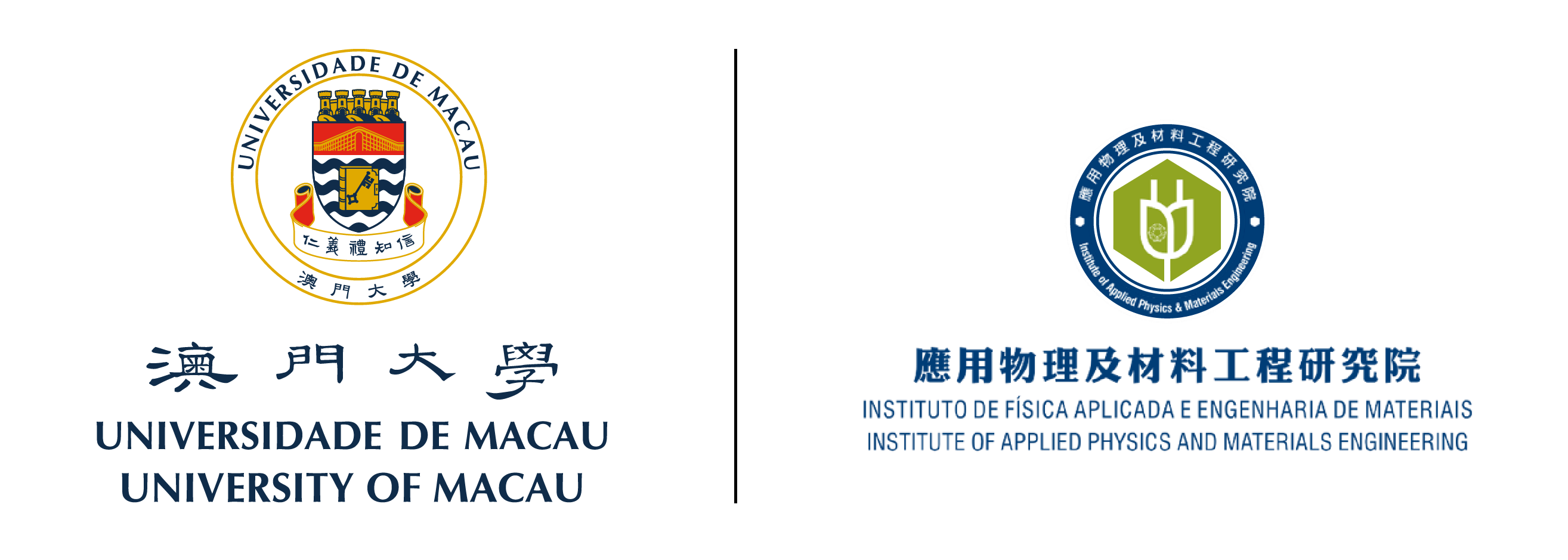Small, an internationally renowned academic journal, recently published a special issue to celebrate the 40th anniversary of University of Macau (UM). Prof. Yonghua SONG, Prof. Zikang TANG and co-workers have written the introduction for this issue, and in which, 26 academic papers are included. It presents a multitude of scientific research achievement in advanced materials, physics, biology and biomedicine from UM on the occasion of its 40th anniversary. Today’s UM is on the threshold of a new era. It is a university of and for Macao; it is also an active participant in the development of the Guangdong-Hong Kong-Macao Greater Bay Area and China, with the ambition to ‘go global’. It aspires to be a university of excellence that is the pride of Macao residents and recognized by academic communities both at home and abroad. Most papers in this special issue highlight the work of researchers in UM’s Institute of Applied Physics and Materials Engineering (IAPME), Faculty of Health Science (FHS) and the Institute of Chinese Medical Sciences (ICMS).
Front cover: the Wu Yee Sun library at UM
Prof. Qu et al. (2102325) reviewed synthesis strategies and current approaches for modulating optical properties of carbon dots (CDs) over the deep-red to near-infrared region. Prof. Xing et al. (2100560) reported the phase tailoring of quasi-two-dimensional (quasi-2D) perovskite and the regulation of crystallization dynamics. Prof. Xing et al. (2100809) also reviewed advances in non-linear phonics in low-dimension perovskites. Prof. Sun et al. (2103514) summarized the development of quasi-2D perovskite solar cells. Prof. Wang et al. (2101359) proposed a potassium bromide-enriched surface passivation method for the fabrication of highly blue-emissive CsPbBr3 nanoplates. Prof. Wang et al. (2101316) also achieved a record response speed of 146.8 ns based on tandem-structured organic photodetector. Prof. Cai et al. (2100246) introduced patterned sapphire substrates to construct MoS2-based photodetectors with improved response performance. Prof. Pan et al. (2101482) reported four types of unique structures based on MXenes and C/N-Si layers and performed calculations to illustrate the properties of the designed 2D structures. Prof. Liu et al. (2102233) reviewed the latest developments in the rational design of the commercialization-driven high mass loading electrodes for lithium batteries. Prof. Hong et al. (2101576) proposed a new approach for the synthesis of N and F dual doped soft carbon nanofibers for enhanced potassium storage. Prof. Chen et al. (2103679) reviewed some recent key advances in improving the safety of lithium-ion batteries with a unique focus on thermal-responsive and fire-resistant battery materials.
Perovskite oxide-based electrocatalysts
Catalysis is attracting widespread interest in various fields, such as environmental production and green energy. Prof. Xing et al. (2102408) developed the oxygen defect engineering of β-MnO2 catalysts for the selective catalytic reduction of NO with NH3. Prof. Pan et al. (2101605) reviewed the development of perovskite oxide as electrocatalysts for oxygen evolution reaction (OER). Prof. Wang et al. (2101487) reported on a simple microneedle array solar for spatially salt and steam separation under sun irradiation, with a high solar evaporation rate of 2.94 kg m–2 h–1. Prof. Sun et al. (2103214) fabricated a wide-temperature-range proton exchange membrane for fuel cells by a self-assembly process with UiO-66 derived carbon (porous carbon-ZrO2), branched poly (4,4′-diphenylether-5,5′-bibenzimidazole) (OPBI), and polyacrylamide hydrogels. Prof. Zhang et al. (2101393) developed a series of MOFs-derived Ce/Co bimetallic catalysts for reducing the antibiotics pollution. Wearable sensor is another research hotspot that offers a broad spectrum of applications from healthcare monitoring, human-machine interaction, to Internet of things for the emerging intelligent era. Prof. Zhou et al. (2103312) designed a high-permittivity gradient micro-dome architecture with a high sensitivity of 0.065 kPa in an ultrabroad linearity range up to 1700 kPa. Moreover, artificial nanochannel sensors can detect various analytes based on the transmembrane ion current signal. Prof. Zhang et al. (2100495) reviewed the development of three detection methods in recent years, which lays a foundation for the precise detection of nanochannel systems and inspires researchers to solve current problems in this field.
Bioimaging technology is essential for modern medical diagnosis and drug efficacy evaluation. Prof. Chen et al. (2103780) summarised the optimisations of the second near-infrared window (NIR-II) probes. Prof. Li et al. (2103127) reviewed recent advances in conjugated polymer materials in bioimaging and cancer therapy. Prof. Dai et al. (2100314) reviewed the recent advances of MPNs. Prof. Zheng et al. (2103584) established the comprehensive correlation between zebrafish and mice models regarding the biofate of polymeric nanocarriers in vivo. Prof. Yuan et al. (2101397) constructed a theranostic nanoplatform that can visually acquire all-round structural and functional information of lung cancer. Prof. Wang et al. (2101139) developed a novel supramolecular peptide-camptothecin nanodrug, which can significantly enhance tumor specific drug accumulation and the overall therapeutic efficacy with minimal side-effects. Prof. Wang et al. (2101332) also developed a brand-new concept of bioorthogonal “supramolecular tropism” for targeted delivery of guest-modified Au nanoparticles to host-modified iron oxide nanoparticles (as an artificial target). Prof. Zhao et al. (2102624) found tumor microenvironment immunomodulated nanozyme is a promising tool to improve the therapeutic obstacles of CAR T-cells against solid tumors.
Wiley is the largest independent academic book publisher among the world and the third academic journal publisher, is also one of the most well-known academic publishers with long history. Small, is one of the top multidisciplinary journals under Wiley, covering a broad spectrum of topics at the nano- and microscale at the interface of materials science, chemistry, physics, engineering, medicine, and biology with a 2021 Journal Impact Factor of 13.281.
More information of the issue is available at:





